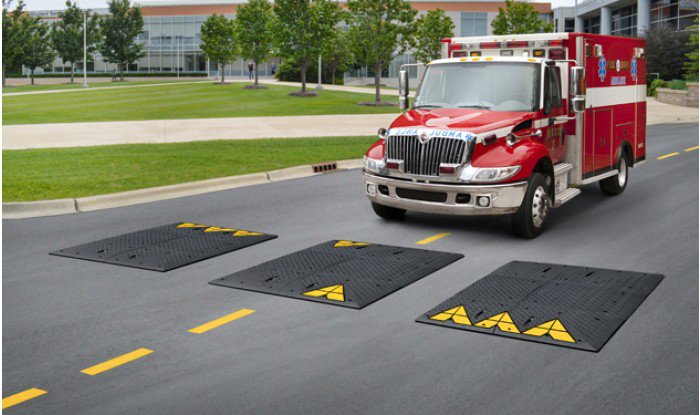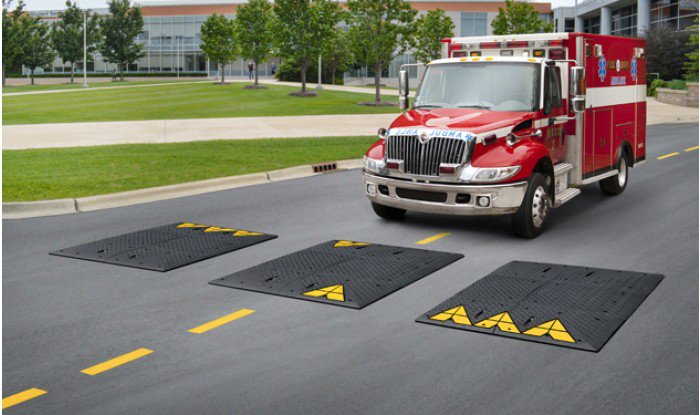There could be speed humps and/or speed lumps in Manteca’s future.
But before that happens, Manteca staff is developing an encompassing traffic calming strategy that will outline various options, what is needed to justify the deployment of traffic calming devices, and steps needed each time a problem street is targeted for improvement by the City Council acting on neighborhood requests.
The goals of the city program are to:
achieve slower speeds for vehicles.
reduce collision frequency and severity.
reduce the need for police enforcement.
promote pedestrian, bicycle, and transit use.
improve safety and convenience for pedestrians and bicyclists.
reducing cut-through vehicle traffic.
Deputy Public Works Director Koosun Kim in a presentation to the City Council noted the pros of traffic calming included:
permanent speed reduction with one capital improvement project.
low ongoing maintenance costs.
accident and crash reduction at lower speeds.
Among the drawbacks Kim listed:
delays in emergency vehicle response times.
inconvenience to drivers.
benefits are “very” localized.
problems could be diverted to another neighborhood street.
noise, aesthetic, and visual impacts.
Kim noted a number of traffic calming devices shouldn’t be used on primary emergency response routes that include arterials and most collector streets. In addition he said elected leaders needed to keep in mind longer emergency vehicle response times become permanent. The use of some traffic calming devices would mean fire trucks coming to a complete stop due to their weight as well as ambulances that have delicate medical instruments and especially when they are carrying patients.
The biggest response impacts would deal with cardiac arrest cases and fires in multi-residential structures where quick response times are critical for the best possible outcomes.
Examples of traffic calming measures include:
striping designed to narrow lanes and alert drivers. pedestrians and bicyclists.
bicycle lanes to promote bicycle use and safety as well as slow down vehicles by making travel lanes narrower.
Botts Dots with reflective markers to keep drivers on the right side of the road. They are especially useful on curves such as those found on North Powers Avenue.
speed limit radar displays in conjunction with static speed limit signs in a bid to educate motorists of their speed and to encourage compliance. Deployment includes temporary radar trailers and solar powered speed limit signs.
increase traffic enforcement. As opposed to other measures it would be impossible to have in place 24/7.
speed humps across the street that force motorists to slow down in order to cross. They would not be deployed on emergency response routes.
speed lumps — basically three smaller speed humps — spaced to allow buses and emergency vehicles to straddle them by going down the middle of the road or toward the side of the road.
speed tables that are a flat-topped speed hump of a longer length that can be used on emergency response routes.
raised crosswalks that provide pedestrians with a sidewalk level street crossing. The raised crosswalks function as a speed hump of sorts while making pedestrians more visible to approaching motorists.
Other traffic calming devices include bulb outs, pedestrian islands, traffic circles, partial or fill closure of streets, and stop signs.
Any proposal to examine the need for the deployment of a traffic calming device would require robust public participation.
This would involve the following steps:
a request for a study.
developing a traffic calming plan by identifying criteria, determining hotspots, analyzing data, and identifying appropriate traffic calming measures.
approval process with public participation.
implementation and evaluation.
If the initial effort doesn’t deliver the desired results a second stage would take place. That would involve looking at applicable measures, a community meeting, and then securing department or City Council approval before implementing.
Those involved in the approval process besides impacted neighbors would be the fire department, police department, ambulance services, local and regional transit, Manteca Unified School District, public works (garbage, street sweeping, and maintenance), Community Development Department, postal carriers, and delivery services.
Kim noted key thresholds would have to be met specifically for speed limits and stop signs.
One example for speed limits would be if 85 percent of the driving on a roadway that is not an arterial is traveling at speeds above 32 miles per hour then the street would be eligible for traffic calming.
Examples of thresholds that would be needed for stop signs include if an intersection has a significant number of automobile-pedestrian collisions or a high potential for them to happen, an intersection with a history of correctable traffic collisions, and a series of warrants that must be met to protect the city’s future liability.
Staff will return to the City Council at a future date with a traffic calming program to replace the last one implemented in 2000.
To contact Dennis Wyatt, email dwyatt@mantecabulletin.com








